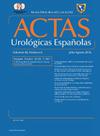Análisis de la composición de cálculos urinarios mediante espectroscopia infrarroja
IF 1.2
4区 医学
Q3 UROLOGY & NEPHROLOGY
引用次数: 0
Abstract
Objective
To assess the composition of urinary stones in Lanzhou area and provide a reference basis for its clinical prevention and treatment.
Methods
A total of 1284 patients with urinary stones were included in the study. The differences in the distribution of stone components among different genders and ages were then analyzed.
Results
The overall male-to-female ratio of the cases was 3.2:1. The average age of the patients was 45.1 ± 14.0 years old. The ratio between upper and lower urinary tract stones was 7.13:1. Mixed stone composition accounted for the majority, 79.0% (1014/1284), with calcium oxalate monohydrate + calcium oxalate dihydrate + carbonate apatite being the most prevalent at 35% (449/1284), and calcium oxalate monohydrate stones being the most prevalent of the single components at 17.8% (228/1284). Apatite carbonate 62.2% (191/307) and magnesium ammonium phosphate hexahydrate 9.8% (30/307) were significantly higher in female patients compared to apatite carbonate 55.2% (539/977) and 2.8% (27/977) in male patients. Calcium oxalate was significantly more prevalent in patients aged 18-60 years than in patients < 18 and ≥ 60 years. The proportion of patients over the age of 60 with urinary stones (10.4%) was significantly higher than patients in other age groups.
Conclusion
Urological stones in Lanzhou area are mainly of mixed type, calcium oxalate monohydrate + calcium oxalate dihydrate + carbonate apatite is the most; with the increase of patient's age, the proportion of uric acid stones increases; the distribution of urinary stone components has significant differences with different genders of patients and different age groups, which is of great significance for clinical prevention and treatment.
使用红外光谱分析尿路结石成分
目的了解兰州地区泌尿系结石的组成,为其临床防治提供参考依据。方法共纳入1284例泌尿系结石患者。然后分析了不同性别和年龄的石质成分分布的差异。结果全部病例的男女比例为3.2:1。患者平均年龄45.1±14.0岁。上、下尿路结石的比例为7.13:1。混合结石成分占多数,为79.0%(1014/1284),其中一水草酸钙+二水草酸钙+碳酸盐磷灰石最多,为35%(449/1284),一水草酸钙结石以单一成分最多,为17.8%(228/1284)。女性患者碳酸磷灰石阳性率62.2%(191/307)、六水磷酸铵镁阳性率9.8%(30/307)显著高于男性患者碳酸磷灰石阳性率55.2%(539/977)、2.8%(27/977)。草酸钙在18-60岁患者中的患病率明显高于18岁和≥60岁患者。60岁以上患者发生尿路结石的比例(10.4%)明显高于其他年龄组。结论兰州地区泌尿系结石以混合型为主,以一水草酸钙+二水草酸钙+碳酸钙磷灰石居多;随着患者年龄的增加,尿酸结石的比例增加;尿石成分的分布在不同性别、不同年龄段的患者中存在显著差异,对临床防治具有重要意义。
本文章由计算机程序翻译,如有差异,请以英文原文为准。
求助全文
约1分钟内获得全文
求助全文
来源期刊

Actas urologicas espanolas
UROLOGY & NEPHROLOGY-
CiteScore
1.90
自引率
0.00%
发文量
98
审稿时长
46 days
期刊介绍:
Actas Urológicas Españolas is an international journal dedicated to urological diseases and renal transplant. It has been the official publication of the Spanish Urology Association since 1974 and of the American Urology Confederation since 2008. Its articles cover all aspects related to urology.
Actas Urológicas Españolas, governed by the peer review system (double blinded), is published online in Spanish and English. Consequently, manuscripts may be sent in Spanish or English and bidirectional free cost translation will be provided.
 求助内容:
求助内容: 应助结果提醒方式:
应助结果提醒方式:


